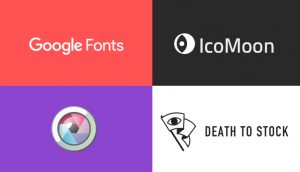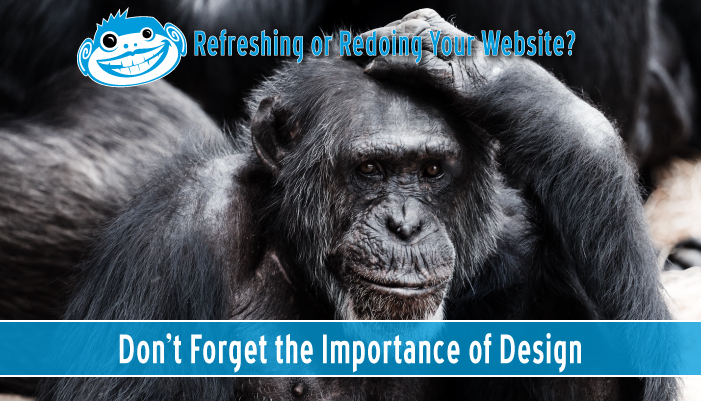A good design can bring a good idea to life in every aspect your brain can imagine and your eye can see, especially in business branding and especially when it comes to your website.
How long has it been since you took a good hard look at the impression your website makes?
In life and in our work, impressions—especially first ones—are critical to the way we’re perceived and accepted by others. And right or wrong, much of what goes into the first impression we make has to do with how something (or we) look on the outside. What’s inside doesn’t necessarily matter at first blush, not until people form their initial opinion and decide whether getting to know us (the person) or our brand or to dive deeper into our website is worth the effort.
What makes a good design? That, as they say, is in the eye of the beholder. But there are some things to consider as you put together ideas and layouts for that refresh or complete redo of your online presence.
Why is Design Important?
Website design can serve several different purposes, ranging from aesthetics (look and feel) to function (user experience).
Look and Feel—The proper design can catch the eye, especially on the home page or other landing pages, grabbing someone’s attention who otherwise might pass your website by. First and foremost, you want your website to appeal to target visitors and draw them in so they actually read your content and respond to your calls to action.
I know what you’re thinking. What about websites like Craigslist.org or the Drudge Report? Their minimalistic designs can hardly be considered “eye catching.”
Maybe—but consider this: their target visitors aren’t looking to be wowed by colors and graphics; they are looking for immediate and easy access either to deals that can’t be beat or breaking news from around the globe. So this regard, the design of both of these websites functions exactly as intended, which brings me to the other aspect of design that’s vitally important: function.
User Experience—Beyond grabbing the attention of your target visitors, your website’s design needs to hold them there. Granted, the content they find plays a HUGE role in visitor retention, but if website visitors can’t get to what they want because the design is not intuitive or difficult to navigate—if it doesn’t support the function of your website—they will simply go someplace else to find what they want.
Abandonment is always the click of a “close” button away, and when clicked all that hard work spent on getting people to your website and messaging once they are there could be all for naught.
Who Is My Website Design For?
Often, website owners will balk at a design idea because they don’t like it. That’s fine. Ultimately, they’re the ones paying the bill, and website designers and developers certainly want to satisfy the design preferences of the person writing the checks. But consider this: is your website design for you, or is it for the people you want to visit there—your all-important target audience?
Certainly, from a design standpoint the hope is that there is considerable alignment between what a company executive or website owner desires and what the brand’s target audience will respond to. But when there is a disconnect, who should win?
When in doubt, always go with the target audience. After all, they are the ones writing your check.
How Do I Know if My Design is Right for My Target Audience?
This is usually the toughest step of the process for brands to wrap their minds around, but the answer is quite simple. To determine what kind of design is right for your target audience, simply ask them.
“But how do I do that?” you may be wondering, or “I don’t have a budget big enough for that,” you might say. I hear you.
Small companies tend to guess at what design they think is right for their target audience—a function of limited staff time and resources, mainly—while larger companies with correspondingly larger pockets tend to at least give this area some attention.
My response is simple. Can you afford NOT to at least address some of the design expectations of your target audience? If you guess and get it wrong, what does that cost you in terms of dollars wasted and time to market you can’t get back.
Granted, there are some standard design elements that all websites should have nowadays, such as a responsive design that’s fit for wide screen and mobile viewing, social media share buttons, and routinely updated content to aid in your search engine optimization and inbound marketing efforts. But as for “optional” design features, online tools such as Survey Monkey make it possible for even the smallest of companies to reach out at little or no cost to a fairly large sampling of their audience or existing customers to get feedback. All that’s needed is an email list and access to the Internet.
- From a look and feel standpoint, try to ascertain the kinds of colors, fonts, graphics, and layouts your audience is most likely to respond to. How important is video and other interactive features, or do they just want it plain and simple?
- Ask about the kind (and types) of content they are likely to find most engaging, such as FAQs, user forums, blogs, white papers, recommended resources, free offers, promotions, giveaways, videos that are educational, informative, and/or fun to watch, etc.
- Ask them what they want to accomplish at your website, such as learning more about the brand, buying a product or service, signing up for a newsletter or blog, watching a video, getting a free consult, etc. Their answers will fuel the calls-to-action you decide to feature within the design of your website.
Going Beyond DIY
While there’s always going to be a certain level of DIY with website design and development, it’s always good to enlist a design and development expert to do the heavy lifting. He or she (or they if it’s a team) will know the latest dos and don’ts from a design and technology standpoint, and can get you faster to market and closer to the design that will work for your brand and your target audience than if you were try to go it alone.
That said, it’s always good to explore your own ideas so that when you do meet with a designer or design team, you have something to discuss or show. Here are a few online tools that can help you get started.

- Pixlr (online photo editing)
- PhotoStory (create audiovisual presentations out of your photos and images)
- Google Fonts (scan a wide range of free fonts – because typography is important)
- IcoMoon (browse a wide range of pixel perfect iconsolutions, many of which are free)
- Death to Stock Photo (help overcoming the equivalent of writer’s block for photo seekers)
What Are Your Next Steps?
Let’s face it, we’re not all designers, though some of us would like to think we are. But sure enough, if your website design doesn’t meet your target audience’s expectations, and doesn’t offer a positive user experience, it will surely undercut your business success.
I invite you to explore your design options with the Barrel O’Monkeyz team. We’ll be happy to provide a free assessment of your current website and put together some ideas on next steps.

